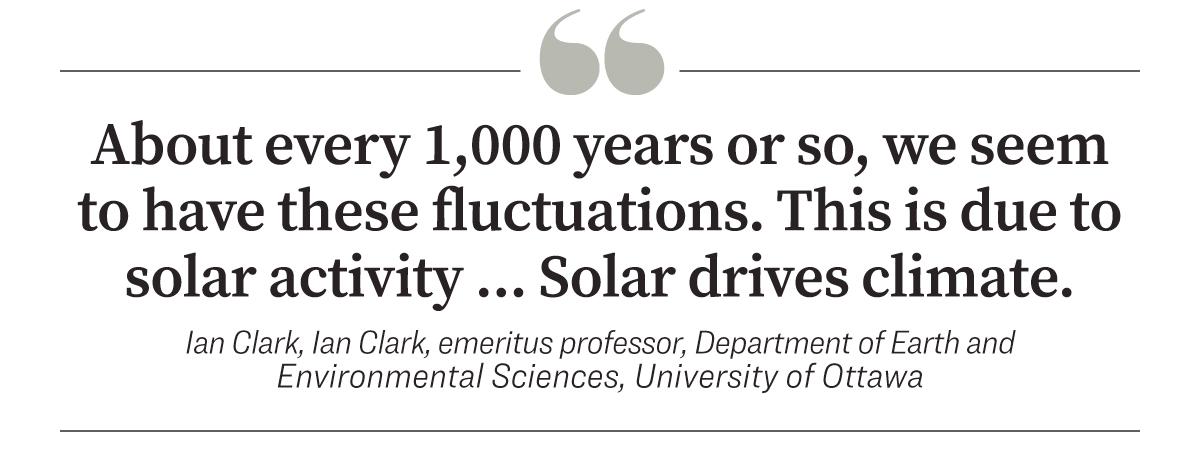‘Pure Junk Science’: Researchers Challenge Narrative on CO2 and Warming Correlation
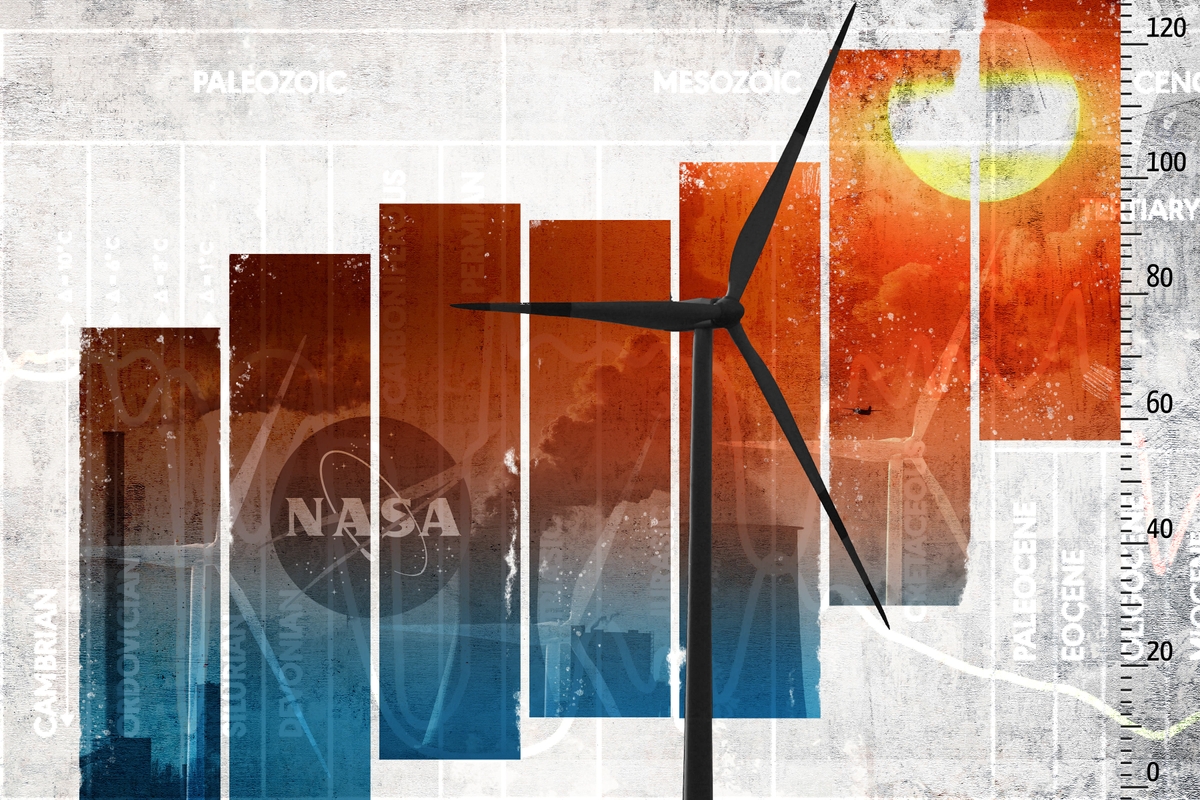
In total, the global price tag comes to about $5.5 trillion per year.
It also found that the “annual climate finance needed” from 2031 to 2050 is more than $10 trillion each year.
“The impacts we’re seeing are only going to get worse, more frequent, more ferocious, and more costly.”
But any decrease in carbon dioxide (CO2) emissions won’t have an effect for hundreds to thousands of years—even under the most restrictive circumstances, according to some experts.
“Surface temperatures would stay elevated for at least a thousand years, implying a long-term commitment to a warmer planet due to past and current emissions,” the report states. “The current CO2-induced warming of Earth is therefore essentially irreversible on human timescales.”
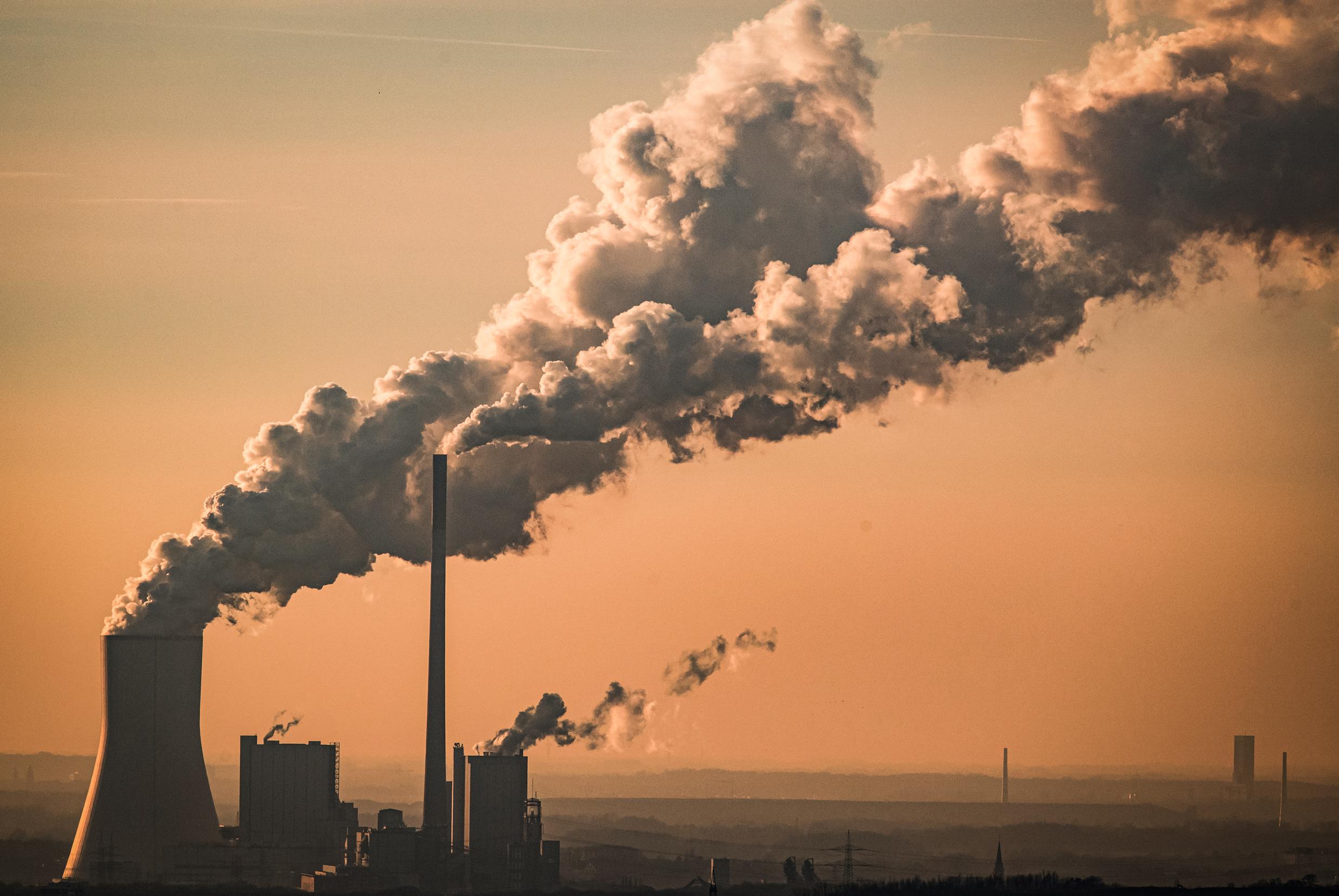
Steam and exhaust rise from a power plant on a cold winter day
in Oberhausen, Germany, on Jan. 6, 2017. (Lukas Schulze/Getty Images)
“If we stopped emitting greenhouse gases today, the rise in global temperatures would begin to flatten within a few years. Temperatures would then plateau but remain well-elevated for many, many centuries,” NASA states.
And, other scientists say, that’s because CO2 isn’t the culprit in the first place.
He said that contrary to popular opinion, temperature doesn’t follow CO2—instead, CO2 follows temperature, which, itself, is due to solar activity.
Temperature and CO2
One of Mr. Clark’s primary areas of research is paleoclimatology (the study of climate conditions using indirect records such as tree ring data, ice cores, and other proxy records), and in particular, Arctic paleohydrogeology, which is the study of the Earth’s water throughout history.“During the ice ages, we had great temperature variations, and this has to do with, not straight-up solar activity, but the amount of solar activity that is hitting the Earth at certain important latitudes, all caused by celestial events,” Mr. Clark said.
“The Earth, in our solar system, is moving around and being jostled. And we have different orbiting patterns that affect solar input, and that creates ice ages and interglacial periods—which we’re in now. And CO2 tracks that. So we'll see enormous temperature changes, going from ice ages to interglacials, and CO2 gets very low during ice ages and very high during interglacials.
“And that gives the appearance that CO2 is driving the climate, but it’s actually following. It lags by about 800 years.”
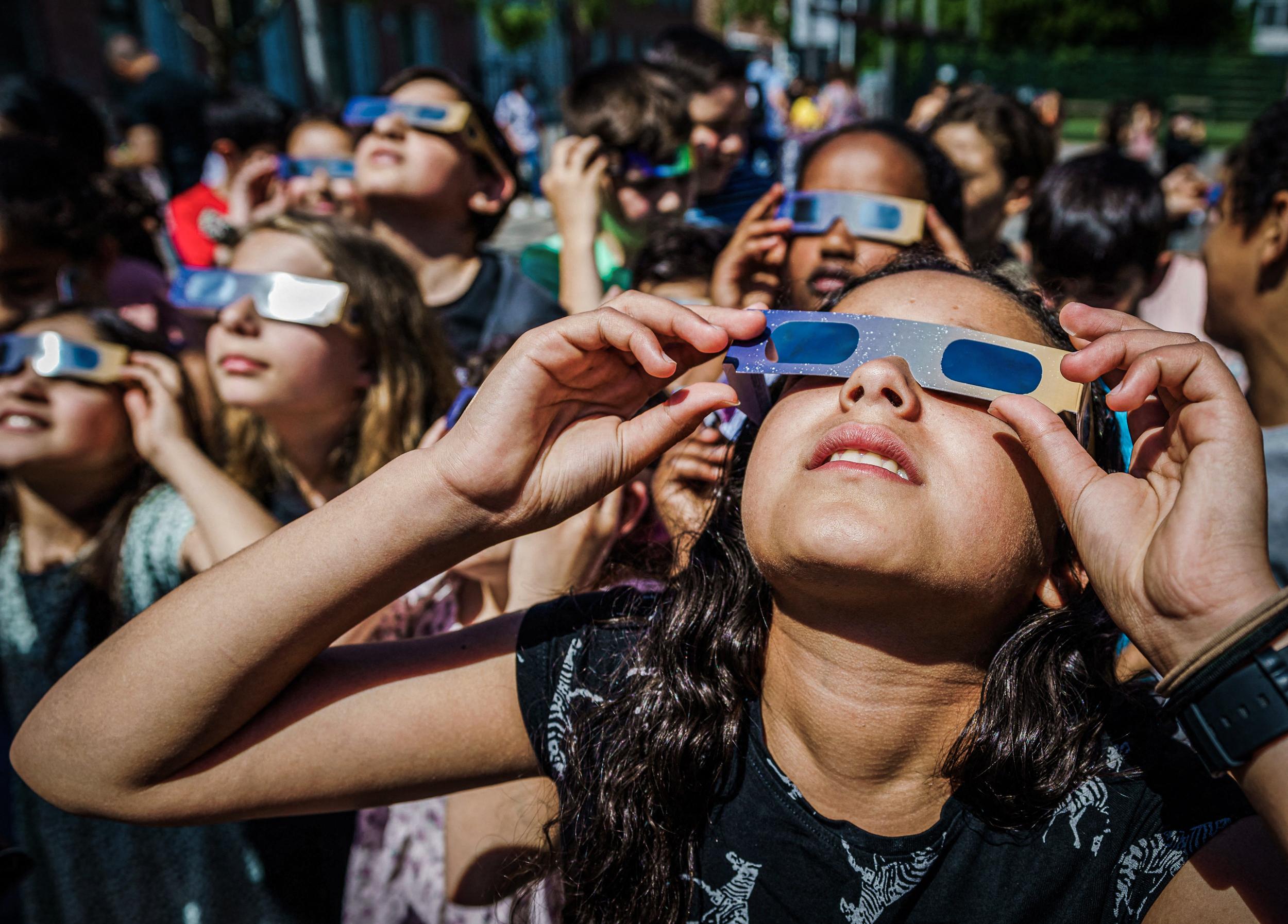
Pupils, wearing protective glasses, look at the partial solar eclipse in Schiedam,
Netherlands, on June 10, 2021. (Marco de Swart/ANP/AFP via Getty Images)
Mr. Clark said that during ice ages, and particularly the past 10,000 years, scientists have a fairly good idea of the temperature, thanks to proxy records. He said those records show that the Medieval Warm Period was likely much warmer than today, and agriculture and civilization flourished.
But the Little Ice Age followed that from the 1400s to 1800s. “And that’s when we had difficulty with agriculture,” Mr. Clark said.
“The Thames froze over. We have all sorts of recollections about how cold, and some would say miserable, it was back then. But then it started warming up again. So, about every 1,000 years or so, we seem to have these fluctuations. This is due to solar activity, and that’s where we see the importance of the sun, which is the ultimate source of energy beyond geothermal and nuclear energy. Solar drives climate.”
Mr. Jackson is a distinguished research and emeritus professor for the department of chemistry at UC–Davis who specializes in understanding the role that molecules such as CO2, nitrogen, and carbon monoxide play in planetary atmospheres.
His paper, published in 2017, found that “changes in atmospheric CO2 concentration did not cause temperature change in the ancient climate.”
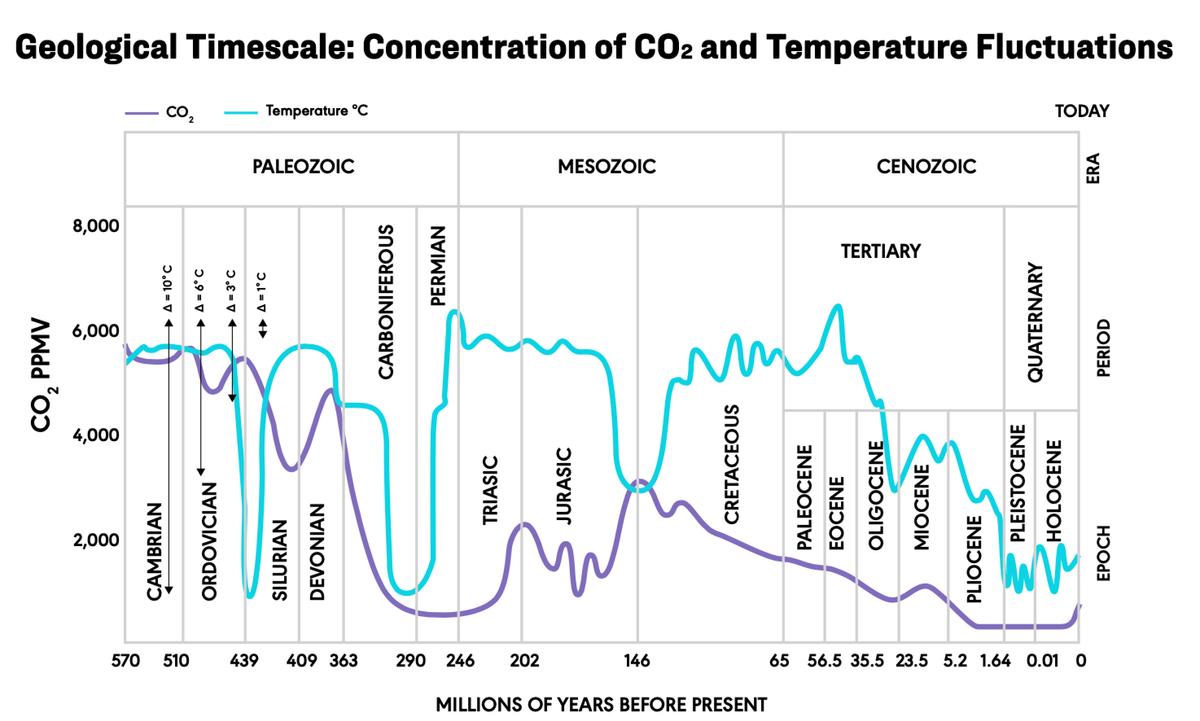
They further found that when temperature and atmospheric CO2 reached a certain level, organic carbon burial drastically increased, eventually resulting in a significant decrease in atmospheric CO2 levels.
Inflow and Outflow
CO2 flows from the atmosphere into plants through photosynthesis and soil through decomposition, is absorbed by the oceans, and is then released through respiration, evaporation, and fossil fuel combustion. The entire process is called the carbon cycle.
Moreover, Mr. Berry said that once CO2 in the atmosphere increases to a certain level, nature automatically increases the outflow.
“It’s almost like a bathtub, which may have a spout open so that water can flow out of it if it reaches a certain level,” he said. “A certain setting of the inflow will raise the level to a certain point. And as the [water] level goes up, the faster it'll flow out. There’s a balance level for any inflow setting—a balance level where it all stays the same. In other words, the outflow equals the inflow. And when the outflow reaches the inflow, it’s at its balance level, and it no longer accumulates.”
Mr. Berry said the premise that humans are solely responsible for increasing CO2 is problematic.
According to the U.N.’s Intergovernmental Panel on Climate Change (IPCC), since 1750, CO2 concentration has increased from 280 parts per million (ppm) to more than 420 ppm, and the IPCC claims that this increase is anthropogenic, or caused by humans.
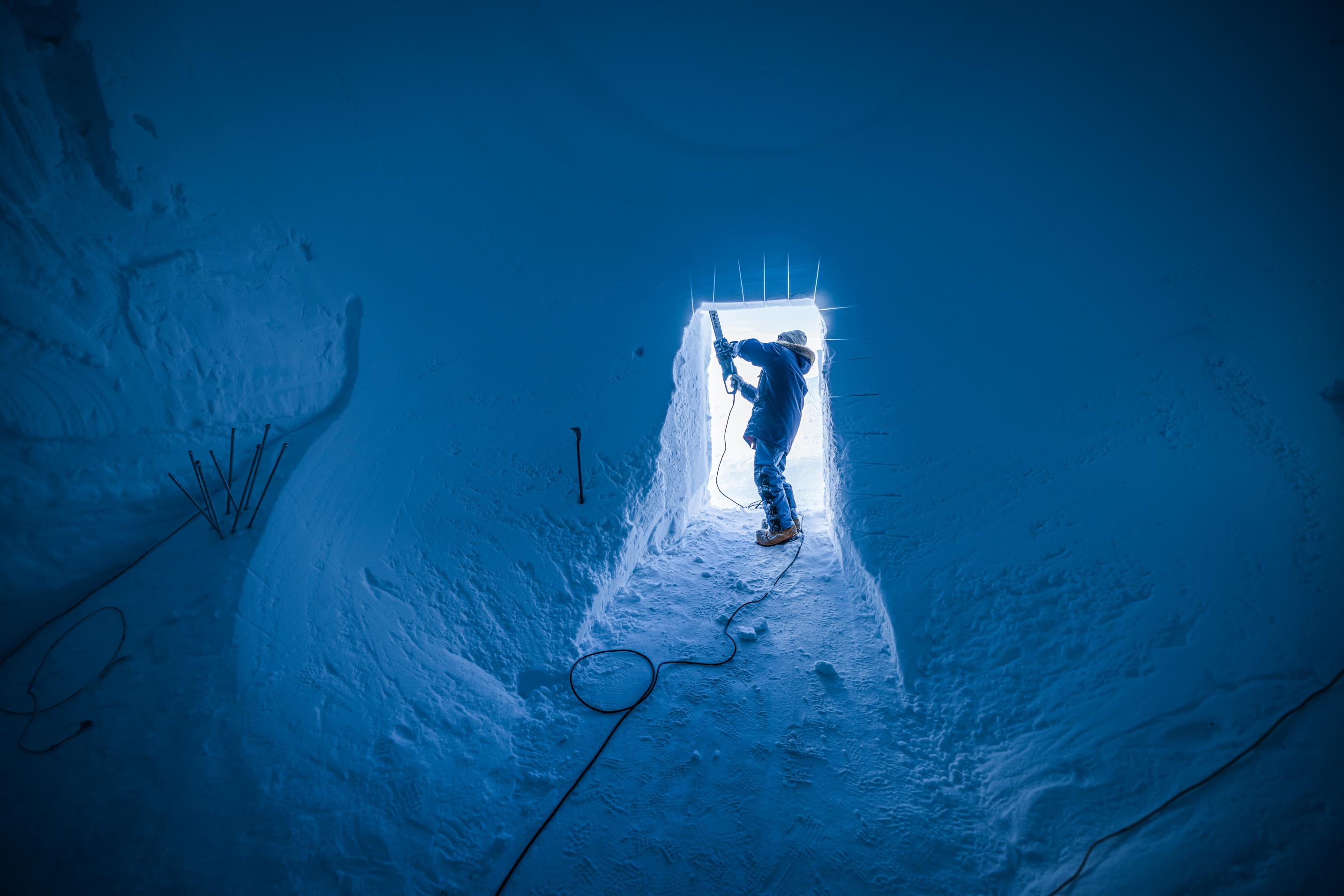
Sepp Kipfstuhl of the East Greenland Ice-Core Project works with a chainsaw to cut a larger entrance
to the new tunnel at the camp on Aug. 6, 2022. (Lukasz Larsson Warzecha/Getty Images)
“Multiple lines of evidence confirm that the post-industrial rise in these gases does not stem from natural mechanisms. ... Emissions of CO2 from fossil fuel use and from the effects of land use change on plant and soil carbon are the primary sources of increased atmospheric CO2.”
Mr. Berry called the IPCC’s statement “totally garbage.”
“I used the IPCC’s own carbon cycle data, which IPCC says is accurate to about 20 percent,” he said. “The model doesn’t give humans producing 140 ppm. It comes out closer to 30 ppm. Which essentially means the IPCC is wrong.”
Mr. Berry said there’s no scientific basis for the claim that a “certain amount of carbon dioxide in the air causes a certain amount of temperature increase.”
“They say we have to reduce (CO2) to 350 ppm to cool it down to where temperature was a while ago? There’s no physics to that,” he said.
Climate Dictated by Sun
“If we completely cut out emissions, CO2 would stop rising at its current rate,” Mr. Clark said. “But it would probably continue to rise to a certain point, and then it could come down. But that would be driven by temperature.”Mr. Clark said that in different parts of the world and at different times of the year, CO2 fluctuates “between 15 and 20 percent,” and that’s driven by the temperature of the seasons.
“If we start having cooler summers and colder winters, those fluctuations would start driving CO2 further down. But overall, climate is going to do whatever the sun dictates,” he said.
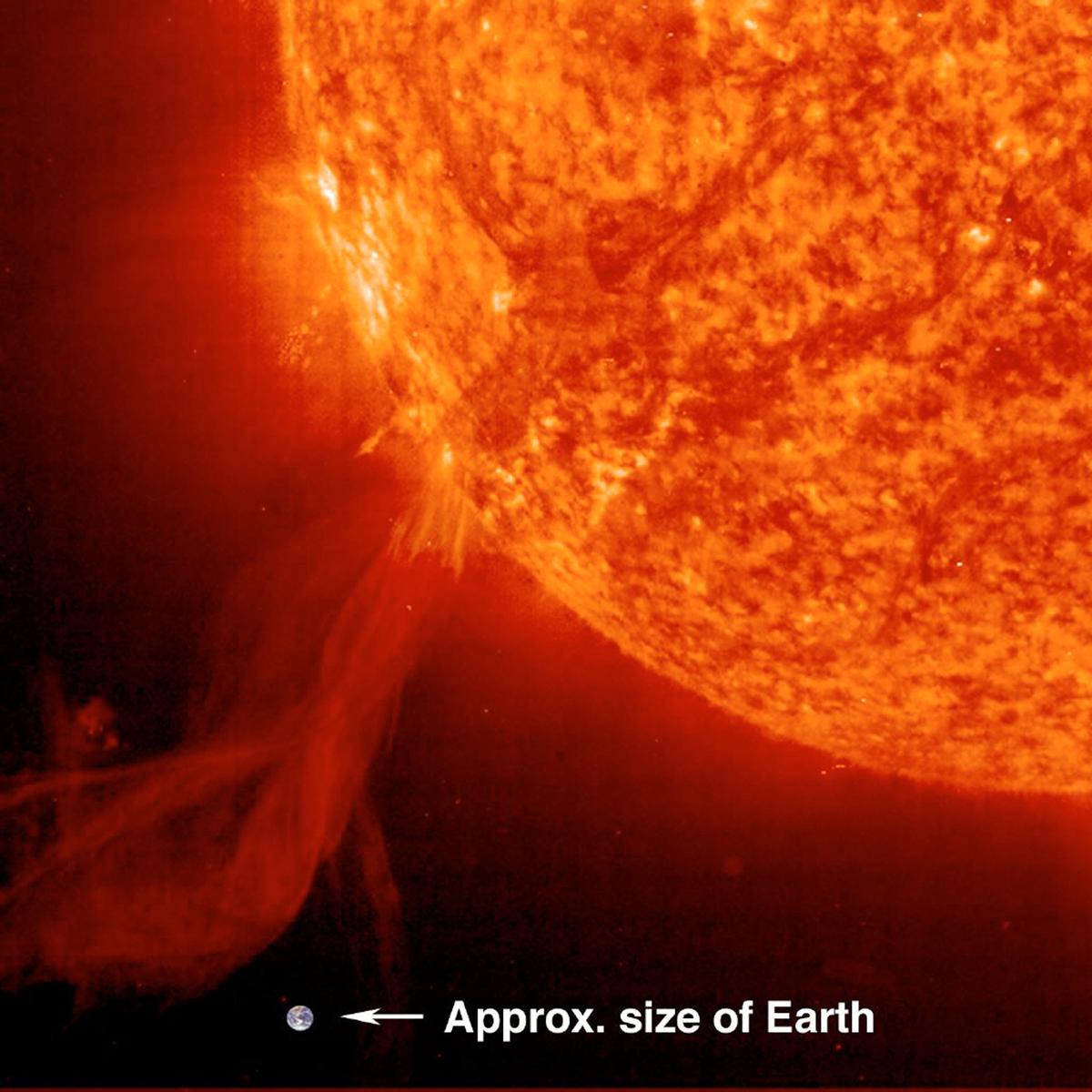
Astronomers at the Solar & Heliospheric Observatory (SOHO) captured this image of a solar prominence
erupting from the surface of the sun on Oct. 25, 2002. It is shown here with the Earth in scale to demonstrate
the immense size of this solar phenomenon. (SOHO/ESA/NASA/Getty Images)
“We had the Roman Warm Period, then the Medieval Warm Period, and now we have the Modern Warm Period; one, two, three. And history and the records tell us they only last a couple hundred years, and we’re already a hundred-some-odd years into this one.”
In addition to not affecting temperature, Mr. Clark said the attempts to reduce CO2 are dangerous because of the anticipated effect on plants.
“C4 plants, like corn, evolved just 20–30 million years ago. And they evolved in response to the declining CO2 in the atmosphere. So, they’re a relative latecomer to our biosphere and reflect the danger of decreasing CO2,” he said.
A majority of plants, such as trees, wheat, and rice, are what’s known as C3 plants, which thrive at higher CO2 levels of 800 to 1500 ppm.
Mr. Clark said one of the benefits of increasing CO2 is improved global grain yields and the general greening of the planet.
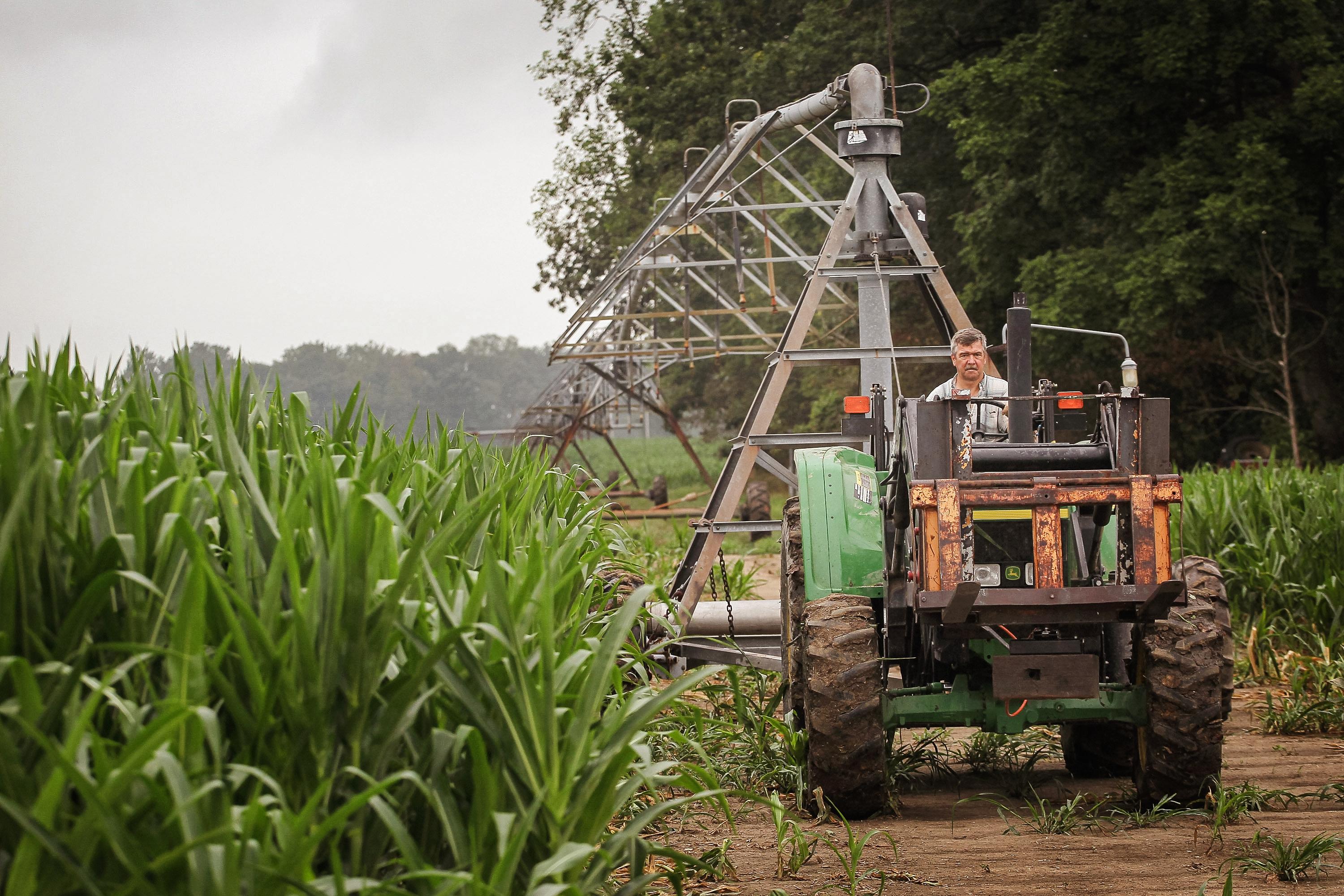
A farmer moves an irrigation system in his cornfield near Whiteland, Ind., on July 20, 2012. (Scott Olson/Getty Images)
In response to The Epoch Times’ request for comment about the Royal Society’s findings that temperature will continue to increase for hundreds to thousands of years even if CO2 emissions were to cease today, Alex Matthews-King, the group’s senior press officer, said via email, “This is a peer-reviewed report authored jointly by Fellows from the Royal Society and U.S. National Academy of Science.”
“The impacts of climate change on people and nature are increasingly apparent. Unprecedented flooding, heat waves, and wildfires have cost billions in damages. Habitats are undergoing rapid shifts in response to changing temperatures and precipitation patterns. Calls for action are getting louder.”
Mr. Clark agreed that humans “do have a footprint on this planet, there’s no question about that.”
But he suggested that the underreported larger effect is being felt in the oceans, where humans have “killed off 90 percent of the large fish population, and whales, and all the rest.”
He said he believes that the money and resources spent on climate conferences could go to “actually improve environmental problems.”
“Anybody who’s a climate realist recognizes that the money we’re spending on mitigation—where we think that we are turning back the CO2 thermostat or trying to turn back to the thermostat and save the world 1.5 degrees of warming—knows that it’s a fantasy. There’s no way we will affect climate with what we’re doing.”













